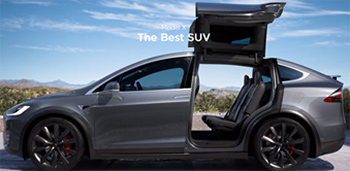It’s time to talk about Tesla, and why I have turned a cold shoulder to the shares.
Last week in Utah, a Model S traveling 60 mph slammed into the back of a parked firetruck. Elon Musk, Tesla’s co-founder, was thrilled the driver escaped with only a broken ankle.
It is a perfect Tesla story, and part of the reason investors should avoid the stock.
To be fair to Musk, the fact that the driver survived is amazing. And normally, that would be the story. However, Tesla stories are never really about amazing engineering. One way or another, sadly, they become stories about unfulfilled promises.
If you are a shareholder, you never want to be part of that kind of narrative.
I will give Musk credit. He is a gifted storyteller. For a long time, he’s been talking about a Tesla master plan. It’s clever. It begins with a high-profile roadster, worthy of effusive praise from the rich and famous.
The slick two-seater introduced the brand. More than that, it proved electric cars didn’t have to be boring, underpowered sewing machines.

The next chapters involved more utilitarian vehicles. There is the flagship Model S — a large, sexy sedan with a 17-inch iPad-like device in the center console. Then came the X, a state-of-the-art sport utility vehicle. The “Back to the Future”-esque gullwing doors were a nice touch.
All these vehicles were supposed to be a prelude to the Model 3 — a “get the groceries, pick up the kids from soccer” kind of car that would sell for $35,000. It was supposed to be the first mass-market Tesla. It was supposed to make the company profitable.
Musk should have called the Model 3 the “E.” It would have been more to the point. (And a better prelude to the forthcoming electric crossover that’s expected to be named the Model Y.)
I have no problem with Tesla not being profitable, honestly. It takes time, and a lot of money, to start a car company from scratch. That is especially true when every aspect of the process is being radically reimagined.
In 2016, Musk said he had an epiphany. He realized that it was possible to build a machine that builds the machines. That’s deep. He was talking about a cutting-edge, robotic factory he called Alien Dreadnaught that could produce Teslas unencumbered by human frailties.
Related story: Tesla Revolution is in the Factory, Not the Car
Immediately, analysts went back to their models. If Dreadnaught worked, it would completely change Tesla’s cost structure, and revolutionize manufacturing.
There was just one problem. It didn’t really live up to Musk’s claims.
A month ago, under pressure to meet Model 3 production goals, Musk admitted that Tesla’s Fremont, Calif., factory had been over-automated. The dream of a factory where raw materials entered one end, and finished goods exited the other, was unrealistic.
Related story: Robots Trip up Elon Musk in Car Factory
And that brings me full circle to the Utah accident …
Although the driver admits she was looking at her phone as her Model S crashed, the media is focusing on her recollection that the vehicle’s Autopilot system was engaged.
Autopilot, despite its poorly chosen name, is not a self-driving vehicle system.
Musk is blaming the media for focusing on the wrong storyline. But he is at fault for evangelizing the autonomous capabilities of Autopilot.
Unfulfilled promises are a recurring theme at Tesla …
- Its original Roadster shared a foundation and stylistic influences with the Lotus Elise.
- The Model S and X were riddled with production and quality control delays.
- And most incarnations of the Model 3 are $15,000 more expensive than the promised mass-market entry point.
None of these reasons, nor analyst angst about cash flow burn rates, are reason to be bearish for Tesla shares. If Musk can get production issues ironed out, financial metrics will turn very quickly. And his ability to tell a compelling story is without equal.
That prospect, coupled with historic short-seller interest, could be rocket fuel for the stock price.
Some smart investors are betting that dynamic will play out.
I have been telling my members to simply stand aside. There are more attractive ways to play the transition to self-driving vehicles.
Microsoft (MSFT), for example, is building relationships with automakers right now that give it a formidable head start in the race to connected cars. The prospect of vehicles communicating with each other would also eliminate car crashes caused by drivers looking at their phones. And the technology is coming much sooner than most investors believe.
The Redmond, Wash., software powerhouse has another leg up on Tesla. Managers are not given to hyperbole about the business. They fulfill promises.
I understand Elon Musk is selling sex appeal. It works. Flip the “3,” and the names of the Tesla models even spell sex. But that should not be enough for most investors. It is certainly not enough for me.
Best wishes,
Jon D. Markman

